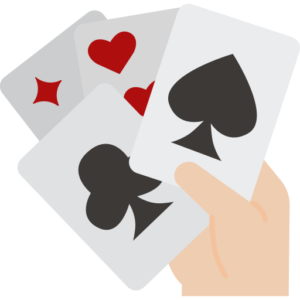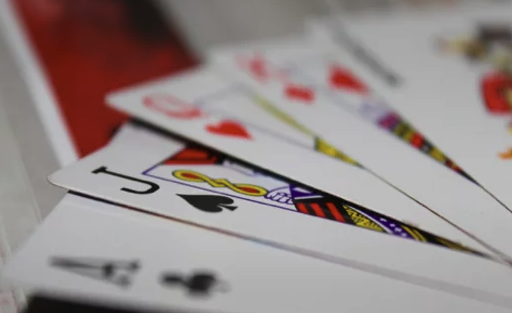Glossary Term
Blind
Blind
Used In: Poker
Introduction
In poker, the term “blind” refers to a forced bet made before any cards are dealt. Blinds are used to ensure there is always money in the pot, which helps to start the action in each hand. These bets are required by two players, typically the ones sitting to the left of the dealer. The player closest to the dealer posts the small blind, while the next player posts the big blind, which is usually double the small blind.
The purpose of blinds is to create an incentive for players to play their hands rather than fold immediately. Without blinds, players could simply wait for the best hands to play, leading to slow and unexciting games. By forcing players to make a bet before they know their cards, blinds increase the overall level of action and strategy in the game. The size of the blinds often increases over time in tournament play to keep the game moving at a steady pace.
Blinds are a fundamental part of many poker games, particularly in Texas Hold'em and Omaha. They play a crucial role in setting the stage for betting rounds and help determine the pace of the game. Understanding how blinds work is key for any player who wants to grasp the basics of poker and develop their skills.
In Depth Look
Blinds are an essential feature of most poker games, particularly in variants like Texas Hold'em and Omaha. The structure begins with two players, the small blind and the big blind, posting forced bets before any cards are dealt. The small blind, typically half the size of the big blind, is posted by the player immediately to the left of the dealer, while the big blind is posted by the next player. These blinds serve as the starting point for the pot and are designed to create immediate action, preventing players from folding right away without any stakes in the game. This system contrasts with “ante” games, where all players contribute a small amount before the hand begins.
Blinds not only ensure action at the table but also influence the overall strategy. The big blind, in particular, represents a significant commitment to the pot, and players in this position often need to defend their hand more aggressively when faced with raises. Over time, as blinds increase in tournament play, they put pressure on players, forcing them to take risks and play more hands. The escalating blinds ensure that the game does not stagnate, pushing players to remain active and continue competing for the pot. Managing your position relative to the blinds is a key strategic element, as the value of your hand and the amount of chips you have relative to the blinds will heavily influence your decision-making throughout the game.
Mechanics
The mechanics of blinds in poker start with the small blind and big blind being posted before any cards are dealt. The small blind is posted by the player immediately to the left of the dealer, and the big blind is posted by the next player. These blinds are mandatory bets, meaning the players in these positions must pay them even if they don't wish to participate in the hand. The blinds act as the initial money in the pot, which ensures there is always something to play for at the start of every hand. After the blinds are posted, the dealer deals the hole cards, and the first round of betting begins.
In a typical betting round, players take turns deciding whether to call, raise, or fold based on their hand. The player in the big blind is already “committed” to the pot by the amount of the big blind, so they can check (stay in the hand without raising) if no one raises. Players in other positions must match the current bet to stay in the hand, and this cycle continues until all bets are matched or players fold. The blinds are reset for each new hand, with the dealer button rotating clockwise, ensuring that each player has the opportunity to be in the small blind and big blind positions as the game progresses. As blinds increase in tournaments, they push players to act more quickly and raise the stakes of the game.


Illustrated Example
Let’s look at an example to better understand how blinds work in poker. Suppose you're playing a Texas Hold'em game with four players: Alice, Bob, Charlie, and Dave. Alice is the dealer, so the blinds are posted by Bob and Charlie. Bob, sitting to Alice's left, posts the small blind of $1. Charlie, sitting to Bob's left, posts the big blind of $2. After the blinds are posted, Alice deals two hole cards to each player. The first round of betting begins with Dave, who has the option to call, raise, or fold. He decides to call the big blind of $2, matching Charlie’s bet. Bob, who already has $1 in the pot, decides to raise to $4, and Charlie, with the big blind, decides to call.
Now, after the first round of betting, the dealer reveals the “flop,” the first three community cards. A second round of betting begins with Alice, who now has the option to bet, check, or fold. The players continue to bet in turns based on their hands and strategies. After the turn and river cards are dealt, a final round of betting takes place, and the best five-card hand wins the pot. The blinds reset for the next hand, with Bob moving into the small blind position and Charlie into the big blind position, rotating clockwise around the table.
| Player | Position | Bet/Action (Pre-Flop) | Small Blind | Big Blind |
|---|---|---|---|---|
| Alice | Dealer | – | – | – |
| Bob | Small Blind | Posts $1 | $1 | – |
| Charlie | Big Blind | Posts $2 | – | $2 |
| Dave | Player | Calls $2 | – | – |
Player Perspective
If you're in the small blind or big blind, you're already committed to the pot before you even see your cards. This gives you a unique position in the hand. The small blind player only has to call half the amount of the big blind, but this can put them at a disadvantage since they are first to act post-flop. The big blind, however, is already committed to the pot for a full bet and is last to act in the first round of betting, which gives them a slight advantage. Players in these positions need to carefully assess whether to defend their blinds with weaker hands or to fold and wait for a better opportunity.
For players not in the blinds, the strategy changes depending on their position. If you're one of the later players to act, you have the advantage of seeing how the players in the blinds have reacted before making your decision. A strong strategy often involves raising when you have a good hand and want to force the players in the blinds to make tough decisions. However, players should also be mindful of the size of the blinds, as they can dictate how much they need to bet to maintain control of the pot. As the blinds increase, players must adjust their approach, becoming more aggressive and willing to take more risks to avoid getting blinded out of the game.
Conclusion
In conclusion, blinds are a fundamental part of poker that drive the action and strategy of the game. They ensure there is always something to play for and create a dynamic environment where players must make decisions early in each hand. Whether you’re in the small blind, big blind, or a position further around the table, how you approach the blinds can greatly impact your chances of success. Understanding how blinds work, and adjusting your strategy accordingly, is key to becoming a more skilled and thoughtful player.
The Top Online Casinos for Playing Poker
These platforms prioritize player satisfaction by providing intuitive interfaces, seamless gameplay experiences, and robust security measures to ensure a fair and enjoyable environment for all users.


Author
Branimir Ivanov | Senior News Contributor







